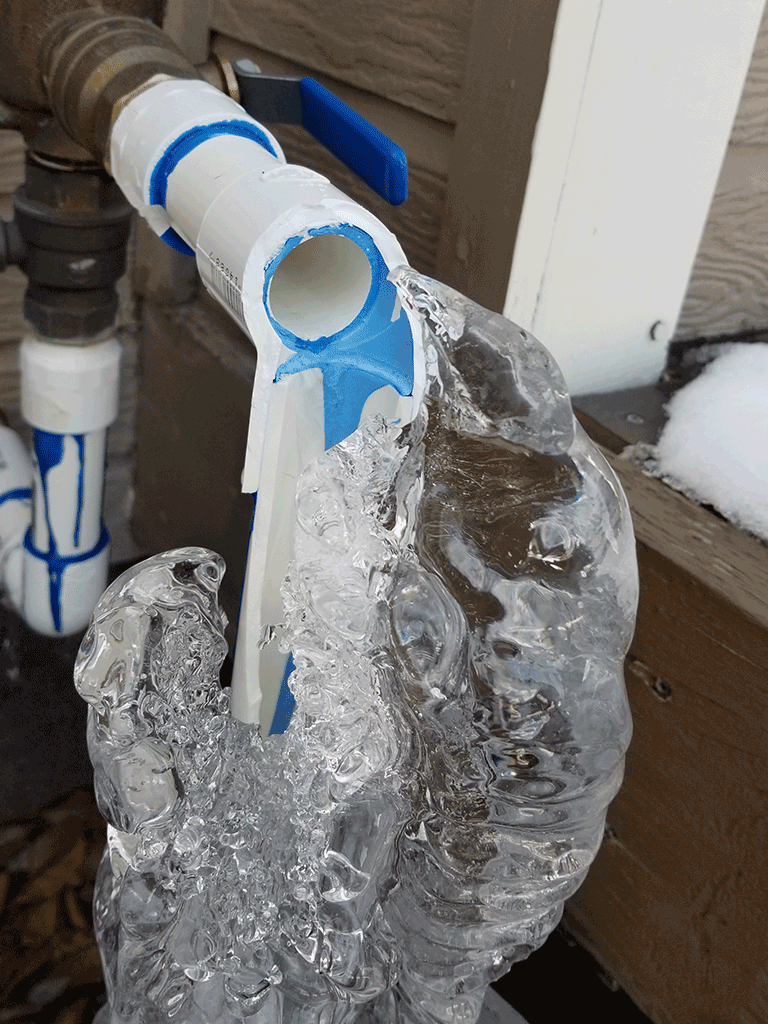Advice for Avoiding Frozen Plumbing in Cold Weather: Professional Insights
Advice for Avoiding Frozen Plumbing in Cold Weather: Professional Insights
Blog Article
Listed here in the next paragraphs you'll find more decent points in relation to Helpful Tips to Prevent Frozen Pipes this Winter.

Winter can damage your plumbing, particularly by freezing pipes. Below's how to stop it from taking place and what to do if it does.
Intro
As temperatures decline, the threat of frozen pipes rises, possibly bring about costly fixings and water damage. Understanding how to stop frozen pipelines is important for property owners in cold environments.
Prevention Tips
Shielding vulnerable pipes
Wrap pipes in insulation sleeves or utilize warm tape to shield them from freezing temperatures. Focus on pipes in unheated or outside areas of the home.
Home heating techniques
Keep interior spaces effectively heated up, particularly areas with pipes. Open up cabinet doors to permit cozy air to distribute around pipelines under sinks.
Just how to identify frozen pipelines
Seek lowered water flow from taps, unusual smells or noises from pipes, and visible frost on exposed pipelines.
Long-Term Solutions
Structural changes
Think about rerouting pipes far from outside walls or unheated locations. Add additional insulation to attics, cellars, and crawl spaces.
Updating insulation
Buy top notch insulation for pipelines, attic rooms, and wall surfaces. Appropriate insulation helps maintain regular temperature levels and decreases the threat of icy pipes.
Safeguarding Outdoor Plumbing
Yard tubes and outdoor faucets
Detach and drain garden hose pipes before winter. Mount frost-proof faucets or cover outside taps with protected caps.
Recognizing Frozen Pipes
What triggers pipelines to ice up?
Pipes freeze when subjected to temperature levels listed below 32 ° F (0 ° C) for extended durations. As water inside the pipelines ices up, it expands, taxing the pipeline walls and possibly causing them to break.
Risks and problems
Icy pipes can lead to water supply disturbances, residential or commercial property damages, and costly repairs. Ruptured pipes can flood homes and create comprehensive structural damages.
Indicators of Frozen Pipeline
Recognizing icy pipes early can stop them from bursting.
What to Do If Your Pipelines Freeze
Immediate actions to take
If you presume frozen pipelines, keep faucets available to soothe pressure as the ice thaws. Utilize a hairdryer or towels soaked in warm water to thaw pipelines gradually.
Conclusion
Stopping frozen pipelines needs proactive steps and quick responses. By recognizing the causes, signs, and preventive measures, house owners can secure their plumbing throughout winter.
6 Proven Ways to Prevent Frozen Pipes and Protect Your Home
Disconnect and Drain Garden Hoses
Before winter arrives, start by disconnecting your garden hoses and draining any remaining water. Close the shut-off valves that supply outdoor hose bibs and leave the outdoor faucet open to allow any residual water to drain. For extra protection, consider using faucet covers throughout the colder months. It’s also important to drain water from any sprinkler supply lines following the manufacturer’s directions.
Insulate Exposed Pipes
Insulating your pipes is an effective way to prevent freezing. Pipe insulation is readily available at home improvement stores and is relatively inexpensive. Pay close attention to pipes in unheated areas such as the attic, basement, crawl spaces, or garage. Apply foam insulation generously to create a buffer against the cold. You can also wrap your pipes in heat tape or thermostat-controlled heat cables for added warmth.
Seal Air Leaks
Inspect your home for any cracks or openings that could let in cold air. Seal any holes around the piping in interior or exterior walls, as well as the sill plates where your home rests on its foundation. Additionally, make sure to keep your garage door closed unless you’re entering or exiting. Leaving it open creates a significant air leak that can lead to frozen pipes.
Allow Warm Air Circulation
During cold snaps, it’s essential to allow warm air to circulate evenly throughout your home. Leave interior doors ajar to promote better airflow. Open kitchen and bathroom cabinets to help distribute heat consistently around the rooms. If you have small children or pets, be sure to remove any household chemicals or potentially harmful cleaners from open cabinets for safety.
Let Faucets Drip
A small trickle of water can make a big difference in preventing ice formation inside your pipes. When temperatures drop significantly, start a drip of water from all faucets served by exposed pipes. This continuous flow helps prevent the water from freezing. Additionally, running a few faucets slightly can relieve pressure inside the pipes, reducing the chances of a rupture if the water inside does freeze.
https://choateshvac.com/6-proven-ways-to-prevent-frozen-pipes-and-protect-your-home/

I discovered that entry on How to Prevent Your Pipes From Freezing while doing a search on the internet. Sharing is caring. Helping others is fun. Thanks for your time spent reading it.
Visit Our Site Report this page